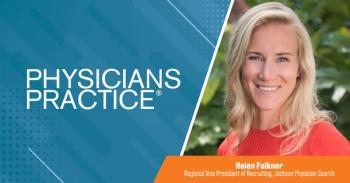
Summer Bootcamp: Remote patient monitoring economics
Monitoring patients remotely can generate over $150 per patient per month.
Editor's note: The information is this story was taken from a recent Medical Economics Bootcamp session. You can find the full video of the session
INTRODUCTION
In 2019 and 2020, the Centers for Medicare & Medicaid Services created new reimbursement codes for providers to monitor and manage patient care remotely. Patients wear small monitoring devices connected to an app on a smartphone that sends data to the physician. Monitoring patients remotely can generate over $150 per patient per month. Remote patient monitoring (RPM) has been shown to improve outcomes for patients while much of the work is done by clinical staff, and it doesn’t require an excessive amount of time from the physician. With inflation hitting record highs and payers focusing more on positive patient outcomes, RPM is the perfect way to both boost revenue and improve patient outcomes. Not every patient is eligible for remote monitoring, but those with a diagnosis of obesity, diabetes or chronic pain usually are, along with patients who require pre- or postsurgical management. Now is the perfect time to see whether RPM makes economic sense for your practice.
LEARNING OBJECTIVES
- Understand the available codes for RPM and the proper way to use them.
- Learn about the benefits of RPM for both physicians and their patients.
- Gain a full appreciation for the reimbursement/revenue potential of a successful RPM program.
MEET THE PANELIST
Shari Kappell, CPCO, CPPM, CPC
How remote patient monitoring can boost your practice revenue and improve patient outcomes
In a time when inflation is rising, medical practices must look at every way possible to boost revenue. When you can accomplish that with existing patients in a way that also improves their outcomes, you have a solution that is helping both patient and practice health. Remote patient monitoring (RPM) provides exactly that. “(RPM) is a revenue stream that is remarkably untapped, despite how CMS (Centers for Medicare & Medicaid Services) backs it,” Shari Kappell, CPCO, CPPM, CPC, implementation and billing manager at CoachCare, says.
RPM is when a patient uses a wireless device that’s able to upload data in real time to a health care provider so they can track and monitor their condition from their practice. The data are relayed using a mobile app.
The old way of seeing a patient was to start with an in-office visit, then schedule a follow-up appointment for months later. That might be all you see of them unless something major occurs. If it does, now you’re either seeing them in the emergency department or as an inpatient if they have severe issues that haven’t been checked in months. With RPM, the person is transmitting their vitals and information in real time. Staffers are assisting with daily monitoring, which might save a trip to the hospital because a physician can intervene faster.
“RPM has a lot of great benefits for the provider,” Kappell says. “You can improve your patient care (and) connectivity with patients, and it’s flexible and efficient. You can monitor your patients before their health conditions get out of control, which is one of the huge benefits of having a (RPM) program.”
Another bonus is that once the physician orders RPM, a junior staffer can monitor the data and only involve the doctor when necessary. “Patients feel like there is more of a connection with their doctor, even though they are not actually speaking to the provider face-to-face,” Kappell says. “Having that connectivity to your provider and your care team is promoting that next level of care for patients. Accountability is driving patients to have better outcomes by having them become more active participants in their health care decisions.”
For example, one CoachCare study on patients who are obese found 86% more weight loss at the patient level for those using RPM compared with those who were not, and those using RPM stayed on the obesity program 30% longer.
Most patients are eligible for RPM, and although those with chronic conditions are often the best candidates, acute patients can also benefit. An RPM patient will need to have had a face-to-face visit over the past 12 months, with telehealth visits also qualifying.
“It’s really based on insurance coverage, to get a basic understanding of where coverage is for your key payers, but for the most part, insurances are covering RPM,” Kappell says.
If staffing is tight or already overburdened, the monitoring function can be outsourced. Kappell says all devices must be FDA approved, so consumer products such as Apple watches are not eligible for use in a RPM program.
As CMS and other payers move to more value-based care contracts, RPM is the perfect tool for physicians. “It’s intervening prior to a medical catastrophe,” Kappell says. “It’s low cost to patients (and is) creating consistent revenue streams for providers. It greatly reduces the chances of patients having to go undiagnosed for months by giving real-time data to providers in their care teams.”
Newsletter
Optimize your practice with the Physicians Practice newsletter, offering management pearls, leadership tips, and business strategies tailored for practice administrators and physicians of any specialty.








